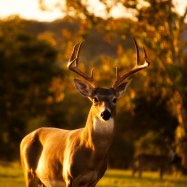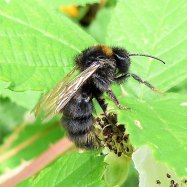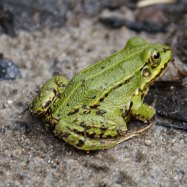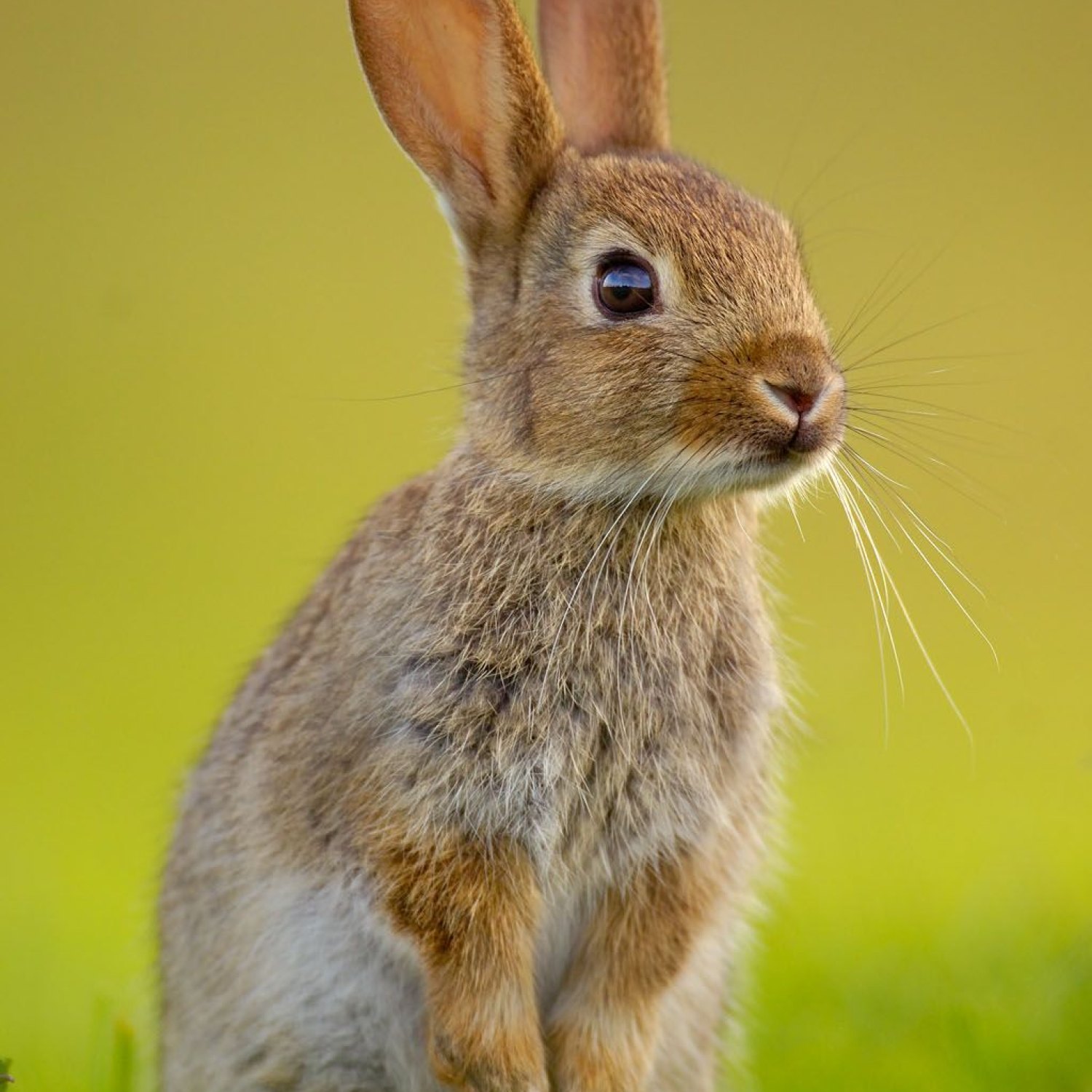
Rabbit
20-50 centimeters
The humble rabbit, a member of the Leporidae family, can be found in diverse regions across the world. These small, fluffy creatures measure 20-50 cm in length and are easily recognizable by their round bodies, long ears, and signature fluffy tail. Rabbits are not only adorable but also play an important role in ecosystems as herbivores and prey animals. #Rabbit #Leporidae #AnimalFacts
Animal Details Summary:
Common Name: Rabbit
Kingdom: Animalia
Habitat: Grasslands, meadows, forests, deserts
The Amazing World of Rabbits: Adorable Creatures of the Animal Kingdom
Rabbits, scientifically known as Oryctolagus cuniculus, are one of the most beloved creatures of the animal kingdom. With their soft fur, long ears, and twitchy noses, they have captured the hearts of many people all over the world. These cute and cuddly animals are found in various regions across the globe, making them a familiar sight in many countries. From their habitat, diet, behavior to unique physical attributes, let's dive into the wonderful world of rabbits and discover what makes them truly amazing creatures Rabbit.Their Home and Habitat
Rabbits are found in different types of habitats, including grasslands, meadows, forests, and even deserts. They are highly adaptable animals and can thrive in a variety of environments. Rabbits are also known to build burrows, either underground or aboveground, as their shelter. These burrows not only provide protection from predators but also serve as a place for breeding and raising their young.In terms of geographical distribution, rabbits are found worldwide, from the United States to Europe, Asia, and Africa. However, they are not indigenous to all of these regions. The country of origin for rabbits is Spain, where they were initially domesticated for their meat and fur. Today, they have been introduced and successfully established in many countries, making them a widespread and abundant species across the globe.
An Herbivorous Diet
Rabbits are known as herbivorous animals, meaning they primarily feed on plants Red Eyed Tree Frog. They have a complex digestive system that allows them to break down tough and fibrous plant material efficiently. In the wild, rabbits feed on grass, weeds, leaves, and bark. They have also been known to occasionally eat fruits and vegetables if available. As herbivores, rabbits play an essential role in the ecosystem by helping to control the growth of plants and promoting biodiversity.Appearance and Physical Characteristics
Rabbits have a distinct appearance that makes them easily recognizable. They have a small, round body with long, powerful hind legs that allow them to move quickly and efficiently. Their fur comes in a variety of colors, including brown, gray, white, and black. This coloration helps them to blend in with their surroundings and provides them with a natural camouflage from predators.One of the most notable physical characteristics of rabbits is their long and floppy ears. Their ears serve several purposes, such as regulating body temperature and picking up sounds to warn them of danger. These ears can also move independently, which helps them to locate the source of a sound accurately.
On average, rabbits can measure between 20-50 centimeters in length and weigh between 0.4-2 kilograms, depending on the species. They also have a fluffy white tail, which they use as a means of communication with other rabbits. The tail is often seen twitching, which can indicate different emotions, including fear, excitement, or warning.
Social and Active Creatures
Rabbits are highly social animals and often live in groups, known as colonies or warrens. These groups can range from a few to a hundred individuals, depending on the availability of resources and the size of the habitat. Within the warren, rabbits will have designated areas for different activities, such as eating and sleeping, to maintain order and reduce conflicts.In terms of behavior, rabbits are known to be active and alert creatures. They are crepuscular animals, which means they are most active during dawn and dusk. This behavior helps them to avoid the harsh midday sun and predators who are also more active during this time. Rabbits are also known for their peculiar behavior called "binkying," which involves jumping and twisting in the air. This behavior can be a sign of happiness and contentment.
Rabbits and Humans
Since ancient times, rabbits have been closely associated with humans. They have been domesticated for their meat and fur, and today, they are commonly kept as pets. Due to their adorable appearance and gentle nature, rabbits make excellent companions, especially for young children. They can be trained to use a litter box, respond to their names, and perform simple tricks.Moreover, rabbits have also been featured prominently in art, literature, and folklore. They are often depicted as symbols of luck, fertility, and even magic. The famous character of Bugs Bunny, a rebellious and quick-witted rabbit, has become an iconic pop culture figure loved by people of all ages.
Threats to Rabbit Populations
Despite their adaptability and high reproductive rate, rabbits face several threats in the wild. Habitat loss, disease, and predation are some of the significant factors affecting rabbit populations. The loss of natural habitats due to human activities such as urbanization, agriculture, and deforestation has reduced the suitable living space for rabbits. This loss of habitat also exposes them to predators, making them vulnerable to predation.Moreover, rabbits are also susceptible to diseases, such as myxomatosis and rabbit hemorrhagic disease. These diseases, often spread by pests and human intervention, have had a significant impact on wild rabbit populations. Conservation efforts such as disease management and reintroduction programs have helped in increasing rabbit populations in some areas.
In Conclusion
In conclusion, rabbits are extraordinary creatures that have captured our hearts with their adorable appearance and endearing behavior. From their adaptable nature and unique physical characteristics to their essential role in the ecosystem, rabbits are truly remarkable animals. However, despite their cultural significance and widespread presence, they also face several challenges in the wild. It is vital to continue conservation efforts and raise awareness about the importance of these animals to ensure their survival in the future. So next time you see a rabbit hopping around in your backyard, take a moment to appreciate their beauty and the wonders of the natural world.

Rabbit
Animal Details Rabbit - Scientific Name: Oryctolagus cuniculus
- Category: Animals R
- Scientific Name: Oryctolagus cuniculus
- Common Name: Rabbit
- Kingdom: Animalia
- Phylum: Chordata
- Class: Mammalia
- Order: Lagomorpha
- Family: Leporidae
- Habitat: Grasslands, meadows, forests, deserts
- Feeding Method: Herbivorous
- Geographical Distribution: Worldwide
- Country of Origin: Spain
- Location: Found in various regions across the globe
- Animal Coloration: Various colors including brown, gray, white, and black
- Body Shape: Small, round body with long ears and a fluffy tail
- Length: 20-50 centimeters
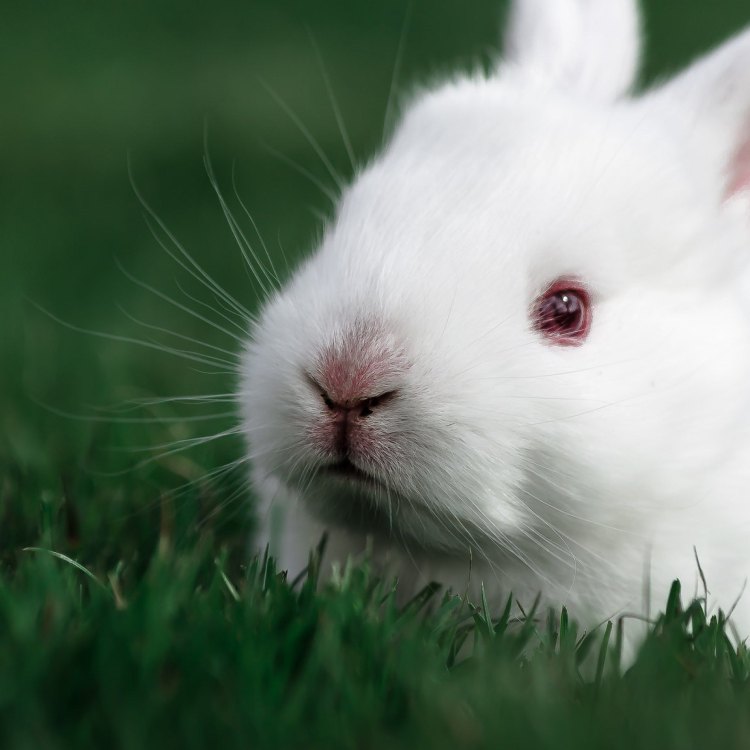
Rabbit
- Adult Size: Medium-sized, typically weighing between 1-2 kilograms
- Average Lifespan: 5-10 years
- Reproduction: Sexual
- Reproductive Behavior: Polygynandrous (both males and females have multiple partners)
- Sound or Call: Vocalizations include purring, growling, and squealing
- Migration Pattern: Non-migratory
- Social Groups: Can be solitary or live in groups
- Behavior: Active during dawn and dusk, burrowers
- Threats: Predation, habitat loss
- Conservation Status: Least Concern
- Impact on Ecosystem: Important role in maintaining plant diversity through seed dispersal
- Human Use: Domesticated as pets, raised for meat and fur
- Distinctive Features: Large, prominent ears
- Interesting Facts: Rabbits have a unique digestive system that allows them to re-ingest their own droppings for additional nutrient absorption
- Predator: Predators include foxes, coyotes, and birds of prey
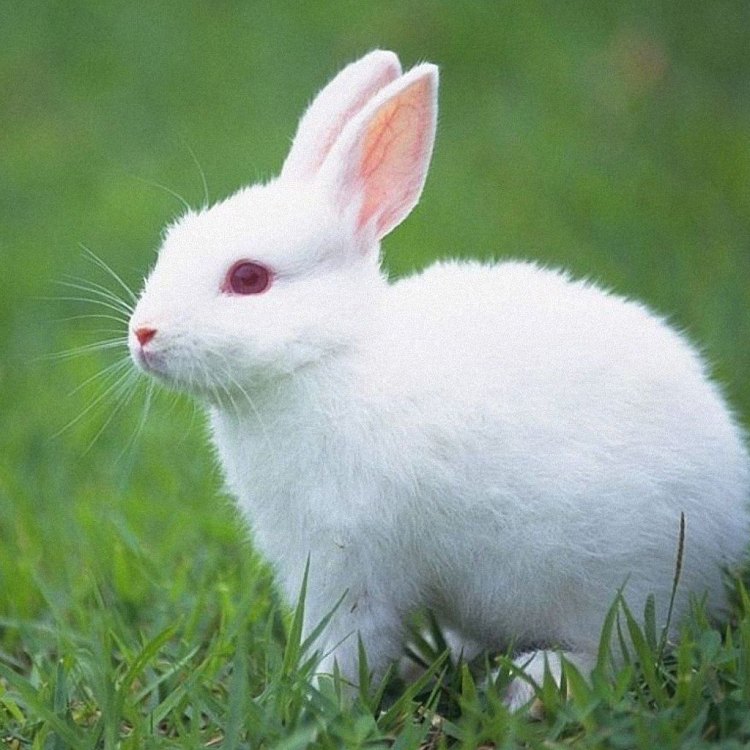
Oryctolagus cuniculus
The Fascinating World of Rabbits: Nature's Cutest Burrowers
Rabbits have long captured the hearts of humans with their adorable appearance and playful personalities. These small, fluffy creatures are found all over the world, in a variety of habitats such as grasslands, forests, and even urban areas. While they may seem like harmless and simple creatures, rabbits actually possess a complex and fascinating nature that makes them a vital part of our ecosystem.From their distinctive physical features to their behavior and role in maintaining our environment, there is much to discover about these adorable creatures PeaceOfAnimals.Com. In this article, we will delve into the world of rabbits and explore the unique traits that make them such interesting animals.
The Basics: Adult Size, Average Lifespan, and Reproduction
Rabbits come in a range of sizes, from small breeds like the Netherland Dwarf to larger breeds like the Flemish Giant. However, on average, rabbits are considered medium-sized animals, typically weighing between 1-2 kilograms. This makes them the perfect size for cuddling and makes them an ideal choice for many pet owners.In the wild, rabbits can live up to 5-10 years, depending on their environment and the availability of resources. However, domesticated rabbits can live up to 12 years with proper care and nutrition. This means that bringing a rabbit into your family is a long-term commitment, so it's important to make sure you are ready for the responsibility before adopting one.
When it comes to reproduction, rabbits are known for their fast breeding habits. They reach sexual maturity at around 3-6 months and can produce a large number of offspring, known as kits, in a relatively short period of time Red Handed Tamarin. This ability to reproduce quickly has made rabbits a popular species for domestication and consumption. However, their reproductive habits also play a crucial role in maintaining the balance of their natural habitats.
Polygynandrous: The Unique Reproductive Behavior of Rabbits
Rabbits have a unique mating behavior, known as polygynandry, which means both males and females have multiple partners. This behavior is seen in many other species, such as wolves and some primates, but it is not common among animals in the same family as rabbits, making it a distinctive trait.In a polygynandrous system, both male and female rabbits will have multiple mates, leading to more genetic diversity among the offspring. This allows for greater adaptation to changing environments and helps to maintain genetic health within the population. It also means that social hierarchy and competition for mates are not as prevalent in rabbits compared to other animals.
Sounds and Calls: Vocalizations of Rabbits
While rabbits may be known for their cute appearance, they are not the quietest animals. In fact, they are quite vocal and have a range of vocalizations for different purposes, including communication and warning signals.Rabbits are capable of making a variety of sounds, such as purring, growling, and squealing. Each sound has a different meaning, and rabbits use these vocalizations to communicate with other rabbits in their group or to warn predators of their presence. For example, purring is a sound rabbits make when they are content and happy, while growling is a sign of aggression.
Non-Migratory: The Wanderless Lifestyle of Rabbits
Unlike many other animals, rabbits do not migrate from one place to another in search of food or better living conditions. They are considered non-migratory, meaning they remain in one area for the majority of their lives.This is partly due to their efficient burrowing abilities, as they can create complex systems of tunnels underground. These burrows provide shelter and protection from predators, as well as a safe place for rabbits to raise their young. Staying in one area also ensures a steady supply of food, which is essential for their survival.
The Contradictory Social Nature of Rabbits
When it comes to social interactions, rabbits can be quite contradictory. While they are known to have strong bonds with their mates and offspring, they can also exhibit both solitary and group behaviors.In the wild, rabbits can form small groups with a dominant male and female, along with their offspring. They will often share burrows and food sources, and work together to protect their young. However, they are also capable of living solitary lives, only interacting with other rabbits during the breeding season.
Similarly, domesticated rabbits can thrive as solitary pets or live happily in pairs or groups. It all depends on their personality and the dynamics within the group. Some rabbits are naturally more social and enjoy the company of others, while others prefer their own space.
Active at Dusk and Dawn: The Behavior of Rabbits
Rabbits are crepuscular animals, meaning they are most active during twilight, at dawn and dusk. This is when they will venture out of their burrows to forage for food and socialize with other rabbits in their group.Being crepuscular allows rabbits to avoid the heat of the day, which they are not well-equipped to handle due to their dense fur. It also helps them avoid predators, as many of their natural predators are nocturnal or diurnal. This behavior also allows them to take advantage of the different lighting conditions for better visibility and safety.
Threats to Rabbits: Predation and Habitat Loss
Rabbits face a variety of threats in both their natural and domesticated environments. Their small size and herbivorous nature make them easy targets for predators, such as foxes, coyotes, and birds of prey. This is why they have evolved to be fast runners, with the ability to reach speeds of up to 45 miles per hour, and have excellent hearing and sight to detect potential dangers.Habitat loss is also a significant threat to rabbits. With the rapid expansion of urban and agricultural areas, their natural habitats are being destroyed and fragmented, making it harder for them to find food and shelter. This, coupled with the decline of predators due to human activities, has led to an increase in the rabbit population in some areas, causing other ecological imbalances.
Conservation Status: Least Concern
With their widespread distribution and adaptable nature, rabbits are considered a species of least concern in terms of conservation. However, some subspecies, such as the Riverine Rabbit in South Africa, are listed as critically endangered due to habitat loss and declining population numbers.Despite their resilient nature, it is important to protect and preserve rabbit habitats to maintain a healthy ecosystem and ensure the survival of these adorable creatures.
The Impact of Rabbits on the Ecosystem
Rabbits may be small, but they play a significant role in maintaining the balance of our ecosystem. As herbivorous animals, they help control the growth of vegetation by feeding on a variety of plants, including grasses, herbs, and even bark. This prevents any one plant species from dominating an area, and allows for greater plant diversity.Rabbits also have a unique digestive system that plays a crucial role in maintaining soil health. They produce two types of droppings: soft ones that are rich in nutrients and are typically eaten by other rabbits, and hard ones that are left behind. The hard droppings act as a natural fertilizer, enriching the soil and promoting plant growth.
The Human Use of Rabbits
Humans have a long history of using rabbits for various purposes. In some cultures, they are considered a delicacy and are raised for their meat and fur. Rabbit fur is known for its softness and warmth, making it a popular material for clothing and accessories.Domestic rabbits are also popular as pets, thanks to their gentle nature and cuddly appearance. They can be trained to use a litter box and can form strong bonds with their owners. However, it is important to note that rabbits require specialized care and a commitment to provide for their physical and emotional needs. They are not a low-maintenance pet, and should not be adopted on a whim.
The Distinctive Features and Unique Facts about Rabbits
Rabbits are instantly recognizable by their large, prominent ears. These ears serve multiple purposes, including aiding in hearing and regulating their body temperature. They also provide rabbits with a wide range of hearing, allowing them to detect potential predators or other rabbits from far away.But perhaps the most interesting fact about rabbits is their unique digestive system. As mentioned before, rabbits have a habit of re-ingesting their own droppings, known as cecotropes, for additional nutrient absorption. This may seem strange, but it is essential for their survival, as rabbits are hindgut fermenters, meaning they require a secondary round of digestion to extract all the essential nutrients from their food. This behavior also helps maintain a healthy balance of bacteria in their digestive tract.
The Predator vs. Prey Relationships of Rabbits
As cute and harmless as rabbits may seem, they are an important part of the food chain and face constant threats from predators. As prey animals, rabbits possess certain natural defense mechanisms to help them survive. This includes their ability to run at high speeds, their keen senses, and their ability to camouflage in their surroundings.Predators targeting rabbits have also evolved to become more efficient and successful in catching their prey. Foxes are known for their exceptional speed and agility when hunting rabbits, while birds of prey, such as hawks and owls, can use their sharp talons and keen eyesight to hunt rabbits from the air.
In Conclusion
Rabbits may be seen as cute and
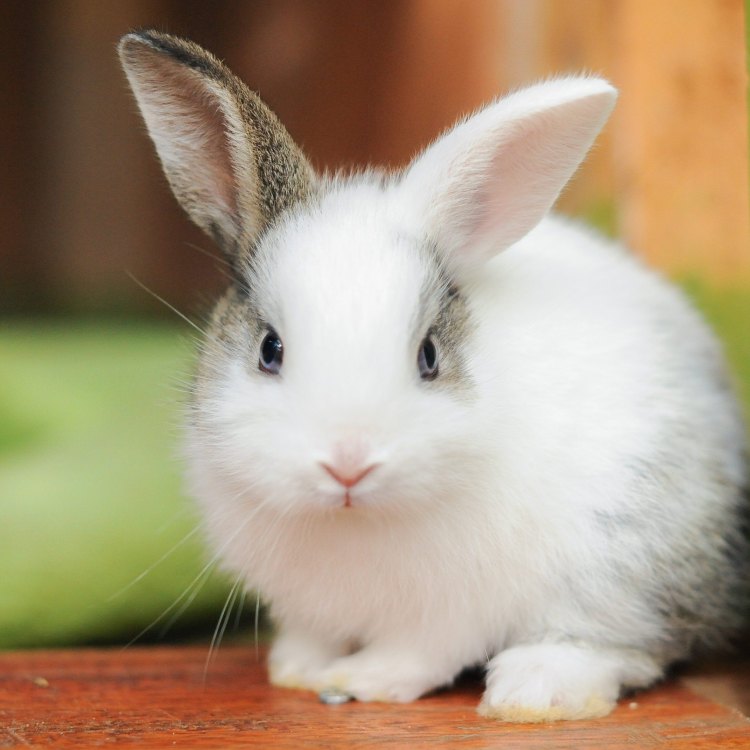
The Amazing World of Rabbits: Adorable Creatures of the Animal Kingdom
Disclaimer: The content provided is for informational purposes only. We cannot guarantee the accuracy of the information on this page 100%. All information provided here may change without prior notice.



